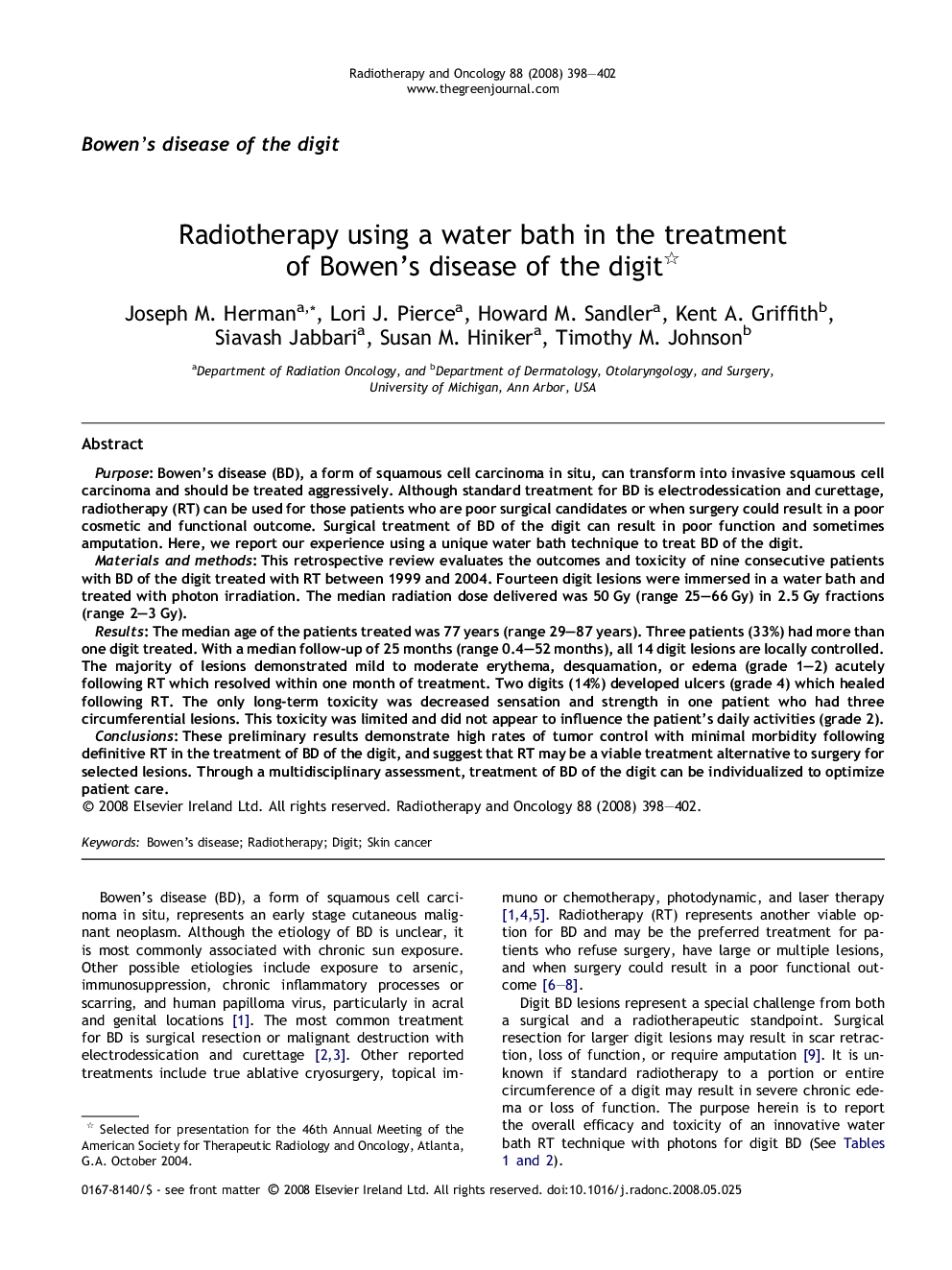| Article ID | Journal | Published Year | Pages | File Type |
|---|---|---|---|---|
| 2160466 | Radiotherapy and Oncology | 2008 | 5 Pages |
PurposeBowen’s disease (BD), a form of squamous cell carcinoma in situ, can transform into invasive squamous cell carcinoma and should be treated aggressively. Although standard treatment for BD is electrodessication and curettage, radiotherapy (RT) can be used for those patients who are poor surgical candidates or when surgery could result in a poor cosmetic and functional outcome. Surgical treatment of BD of the digit can result in poor function and sometimes amputation. Here, we report our experience using a unique water bath technique to treat BD of the digit.Materials and methodsThis retrospective review evaluates the outcomes and toxicity of nine consecutive patients with BD of the digit treated with RT between 1999 and 2004. Fourteen digit lesions were immersed in a water bath and treated with photon irradiation. The median radiation dose delivered was 50 Gy (range 25–66 Gy) in 2.5 Gy fractions (range 2–3 Gy).ResultsThe median age of the patients treated was 77 years (range 29–87 years). Three patients (33%) had more than one digit treated. With a median follow-up of 25 months (range 0.4–52 months), all 14 digit lesions are locally controlled. The majority of lesions demonstrated mild to moderate erythema, desquamation, or edema (grade 1–2) acutely following RT which resolved within one month of treatment. Two digits (14%) developed ulcers (grade 4) which healed following RT. The only long-term toxicity was decreased sensation and strength in one patient who had three circumferential lesions. This toxicity was limited and did not appear to influence the patient’s daily activities (grade 2).ConclusionsThese preliminary results demonstrate high rates of tumor control with minimal morbidity following definitive RT in the treatment of BD of the digit, and suggest that RT may be a viable treatment alternative to surgery for selected lesions. Through a multidisciplinary assessment, treatment of BD of the digit can be individualized to optimize patient care.
